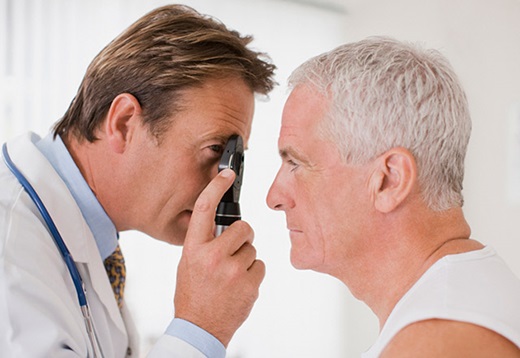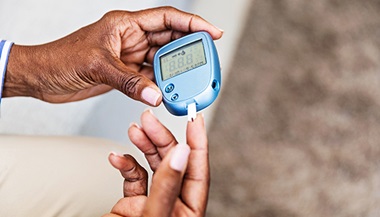Diabetes and Vision: Understanding the Link
Reviewed By:
It’s well known that diabetes raises your blood sugar levels. But this chronic health condition also increases your risk for eye diseases that can cause blindness, says Johns Hopkins diabetes expert Rita Rastogi Kalyani, M.D., M.H.S.
“Elevated blood sugar levels can damage blood vessels in the retina—the area at the back of the eye that sends signals to your brain,” says Kalyani. “This damage, called diabetic retinopathy , can begin years before you notice vision changes.” The condition can lead to diabetic macular edema, a leading cause of vision loss in people with diabetes.

Diabetic retinopathy is the leading cause of new cases of reversible blindness in the United States. About 40 percent of people with diabetes have some degree of retinopathy, according to the National Institutes of Health’s National Eye Institute. At first, tiny blood vessels in the eye may swell. Later, blockages may keep blood and nutrients from reaching parts of the retina. In later, severe stages of diabetic retinopathy, new blood vessels grow as your body tries to deliver blood to the retina. But the new vessels can leak and block vision.
In addition, diabetes increases your risk for cataracts (a condition that makes the clear lens of the eye become cloudy, blocking out light) by 60 percent. And it raises your odds for developing glaucoma, pressure that damages the optic nerve that sends signals from the eyes to the brain, by 40 percent.
There are, however, steps you can take to protect your vision.
Keep your blood sugar at a healthy level. “Work with your doctor to reach your blood sugar goals,” Kalyani recommends. “Follow a healthy eating plan, get regular exercise, and take your medications as directed.” Lowering blood sugar levels could reduce microvascular complications like eye disease by 25 percent.
Watch your blood pressure. Follow doctor-recommended steps to control your blood pressure, which could help protect tiny blood vessels in your eyes from further damage and reduce your risk for vision loss.
Get a dilated eye exam every year. Performed by an ophthalmologist or optometrist experienced in working with people with diabetes, a dilated eye exam can reveal eye changes early. “Early detection gives you time for treatments, such as laser therapy, that can protect your eyes,” Kalyani says. “It also gives you more time to protect your vision by controlling blood sugar and blood pressure.”
Don’t smoke. Tobacco use may add to eye damage.
Research Shows Why You Need an Eye Exam
Fewer than half of all Americans with diabetes-related eye damage know that diabetes can lead to vision loss—and just 60 percent of those in the know had a complete eye exam in the previous year, finds a recent Johns Hopkins study. This “knowledge gap” could increase risk for blindness if people miss out on early eye checks and vision-protecting treatments, the researchers say. In fact, nearly one in four people in this study already had some loss of vision
Definitions
Blood vessels (veh-suls): The system of flexible tubes—arteries, capillaries and veins—that carries blood through the body. Oxygen and nutrients are delivered by arteries to tiny, thin-walled capillaries that feed them to cells and pick up waste material, including carbon dioxide. Capillaries pass the waste to veins, which take the blood back to the heart and lungs, where carbon dioxide is let out through your breath as you exhale.






